Theories and Frameworks
Door Erin Goebel


1. 21st Century Learning
1.1. Characteristics students need to be successful in the 21st century
1.2. Involves 3 types of knowledge
1.2.1. Foundational
1.2.1.1. ie. content, information literacy, cross-disciplinary knowledge
1.2.2. Meta
1.2.2.1. ie. problem solving, critical thinking, communication, collaboration, creativity
1.2.3. Humanistic
1.2.3.1. ie. life/job skills, cultural competence, ethical and emotional awareness
2. Philosophy of Teachnology
2.1. Similar to a Philosophy of Teaching which is unique for every teacher
2.2. Based on a teacher's individual beliefs and values as they pertain to teaching and the integration of technology
2.3. A teacher's personal philosophy about how they use technology as a teaching tool to enhance both teaching and learning
2.4. Should change and develop over time
2.5. Find ways to use technology as a bridge to investigate content
3. TPACK
3.1. Involves 3 types of knowledge that every teacher needs: Technology, Pedagogy and Content
3.2. Analyzes the ideal spot where a teacher can make technological and pedagogical choices to most effectively convey their content expertise
3.3. Can be visualized as a venn diagram with 4 subdomains: TC, TP, PC and TPACK (the ideal!)
3.4. The goal is to eventually acquire interaction between all knowledge areas --> TPACK
3.5. Interactions will change depending on context and the age of students
3.6. Develops as a teacher becomes more experienced
4. SAMR
4.1. Model which analyzes the extent to which technology is integrated into teaching and learning
4.2. The model involves 4 components which are divided into 2 categories
4.2.1. Transformation
4.2.1.1. Redefinition
4.2.1.1.1. Create new tasks not previously possible
4.2.1.1.2. This is the highest level for this model and the goal to which educators should strive for
4.2.1.2. Modification
4.2.1.2.1. Redesign parts of a task
4.2.2. Enhancement
4.2.2.1. Augmentation
4.2.2.1.1. Same task; increase in functionality
4.2.2.2. Substitution
4.2.2.2.1. Same task; new technology replaces old technology
